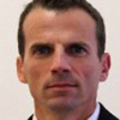Why Special Ops Stopped Relying So Much on Top-Down Leadership
01 Jul. 2015 | Comments (0)
![]()
When Fredrick Winslow Taylor designed the world’s first modern assembly line and forever changed industry, persuasionwas the last thing on his mind. Taylor believed assembly line workers simply needed clear direction on how to execute prescribed tasks. His belief, which manifested in both physical design and organizational structures during the decades that followed, was that the human factor should be removed from the production equation to the greatest extent possible. Stopwatch and measuring tape in hand, Taylor designed and advocated for systems that maximized efficiency and predictability through vertical integration and top-down control. And with that, the 20th century’s great quest for bureaucratic efficiency began.
Taylor’s approach, and the hierarchical models that it created, were the dominant force of the 20th Century. His influence can be found in everything from factory floors to Fortune 500 org-charts. But when the information age arrived, it brought with it networks of globally distributed individuals suddenly able to connect across boundaries, share information at light-speed, rapidly attract new members, and create seemingly leaderless action at a pace that put traditional bureaucracies to shame.
To succeed in this environment, today’s leaders must focus on using persuasion rather than direction to lead their own networks toward a common goal.
This is the critical lesson that the Special Operations community learned during the early years following the attacks of Sept. 11, when the military’s most efficient and optimized hierarchy took on the task of dismantling Al Qaeda – a globally distributed network without any true form of top-down leadership – and quickly found itself outmaneuvered by an adversary that, when measured on any traditional scale, was much less capable. In order to compete on this new type of battlefield, the Special Operations community needed to adapt its organizational structure – transitioning to a hybrid model that retained the strength and stability of a bureaucracy while allowing (and expecting) internal and external networks to become the real drivers of action.
In the Special Operations community, those closest to the problem (in our case, the operators in direct contact with Al Qaeda) were expected to form relationships (both internal and external to our organization) with individuals, units, or organizations that would be effective partners in defeating the threat. These networks were not beholden to org-charts, and were empowered by senior leadership to constantly adapt and move with great autonomy. Empowering these networks allowed us to outmaneuver the terrorist networks we were facing.
In the Special Operations community, there were three critical steps in accomplishing this:
- 1. Understand your problem. We spent many months trying to convince ourselves that Al Qaeda had some type of traditional top-down structure. This was false, and our subsequent strategies were bound to fail. In seeing the threat as a series of interconnected networks, the way we led and communicated shifted accordingly.
- 2. Build the networks. Once you see the interconnectedness of your new environment, you can begin to identify the internal and external networks that are needed to overlay the problem – some will be internal to your organization, and some will be with external partners. In the Special Operations community, we didn’t approach this as a standard “org-redesign” (which are usually just band-aids), but left the org-charts alone and built networks of relationships. Because these ties generally can’t be found on any org-chart, they are delicate and require deliberate nurturing. And most critically, they must consistently articulate the common purpose of the network, reminding all members why they’ve chosen to be a part of the effort.
- 3. Lead from the middle. Finally, break the top-down tradition by pulling yourself, as a leader, into the middle of the network. Rather than being the collector of all information and the choke point for all guidance, today’s leaders need to see themselves as conduits of information who act as the central hub. It’s not your job to control everything; instead, create an environment where cross-boundary relationships can grow and those closest to the problem are empowered to move with speed and precision.
Leaders in all environments must remember that people choose to join networks, and can just as easily choose to withdraw. To influence such a network, and to empower it to operate with speed and accuracy, leaders must create and nurture relationships that span across the vertical divisions on the org-chart – breaking the silos that constrain thinking in so many bureaucracies. As the network grows, leaders must articulate and over-communicate the network’s common purpose.
To sign on and stay in, network members must be persuaded — constantly — that participation in the network contributes to a common purpose that they believe in and advances their personal or organizational interests. Leaders in networks must constantly work to create win-win scenarios for the members, some of whom will likely have competing interests at various times. This requires leaders to truly understand the varied interests (personal and organizational) of the network’s members. In a diverse network (often the most effective), this will be a disparate set of interests – and leaders in networks must protect these equities without bias toward any one group.
Leaders that can persuade others to join their network by articulating a common purpose and rallying others around it will quickly outmaneuver those that rely on traditional top-down methodology. Today’s best leaders are already adapting to this new reality – not checking their stopwatches.
This blog first appeared on Harvard Business Review on 05/27/2015.
View our complete listing of Leadership Development blogs.
-
About the Author:Chris Fussell

Chris Fussell is a director at McChrystal Group.



0 Comment Comment Policy